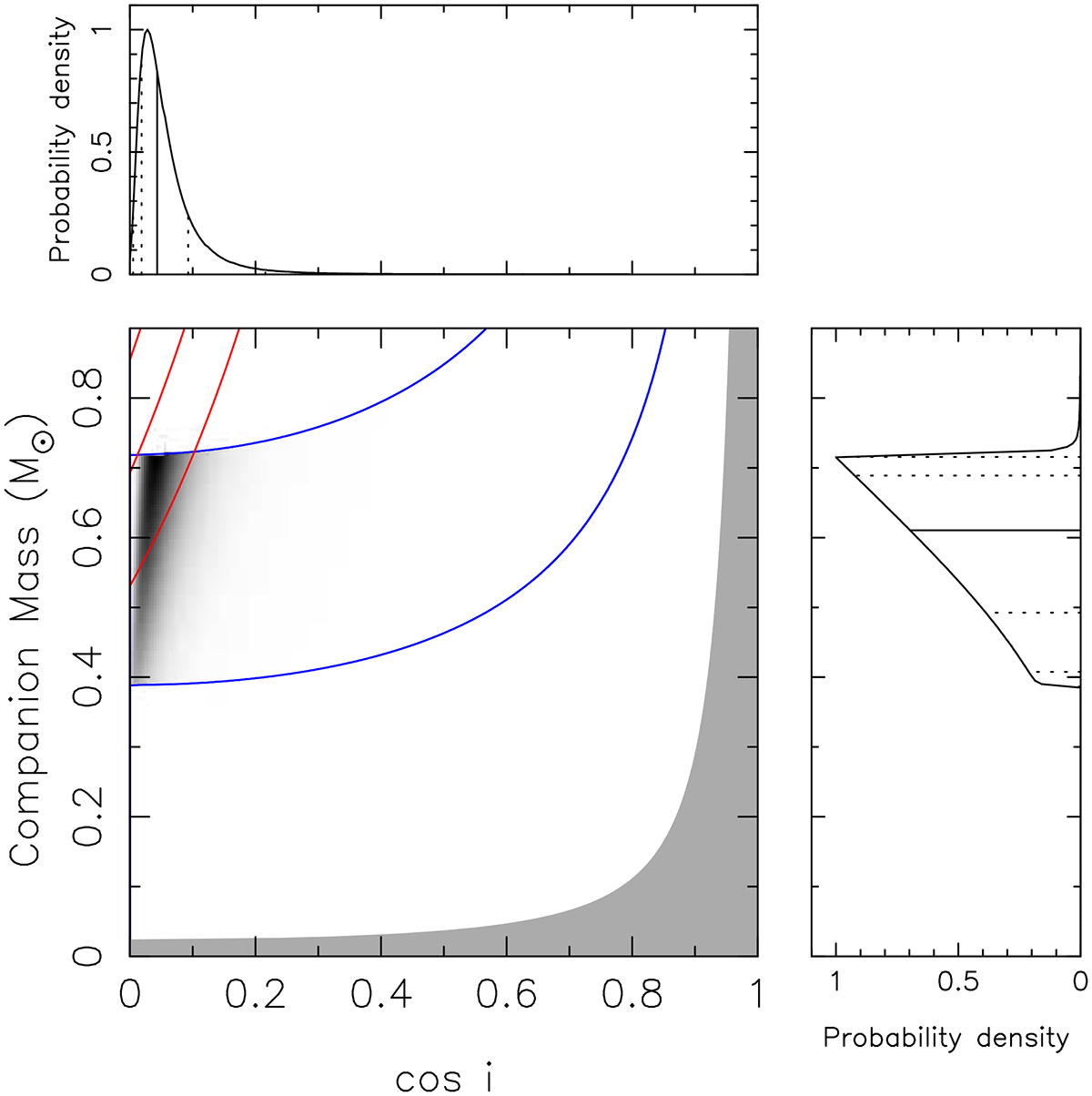Fig. 4.

Download original image
Companion mass and inclination constraints for the PSR J1757−6032 binary system. The main panel shows the M2-cos i plane, (with M2 the mass of the companion star and i the orbital inclination). The grey zone is excluded by the requirement that the pulsar mass must be positive. The gray scale shows the joint posterior probability density function (pdf), with white representing low or no probability. This pdf is limited, at the lower and upper sides, by pulsar masses of 1.17 and ![]() (see text for justification); these are indicated by the blue lines. The red lines show the constraints derived from the median and ±1-σ measurements of h3, measured assuming i = 87.5 deg (see text). The side panels include marginalized posterior probability distribution functions for cos i (top) and (to the right) M2. The solid vertical lines indicate the medians of the distributions, the dotted lines indicate the 1-, 2-, and 3-σ equivalent percentiles around the medians. Despite the lack of precise mass measurements, we can see that nearly edge-on orbital inclinations (i.e. with cos i near zero) are strongly preferred for the whole range of pulsar masses.
(see text for justification); these are indicated by the blue lines. The red lines show the constraints derived from the median and ±1-σ measurements of h3, measured assuming i = 87.5 deg (see text). The side panels include marginalized posterior probability distribution functions for cos i (top) and (to the right) M2. The solid vertical lines indicate the medians of the distributions, the dotted lines indicate the 1-, 2-, and 3-σ equivalent percentiles around the medians. Despite the lack of precise mass measurements, we can see that nearly edge-on orbital inclinations (i.e. with cos i near zero) are strongly preferred for the whole range of pulsar masses.
Current usage metrics show cumulative count of Article Views (full-text article views including HTML views, PDF and ePub downloads, according to the available data) and Abstracts Views on Vision4Press platform.
Data correspond to usage on the plateform after 2015. The current usage metrics is available 48-96 hours after online publication and is updated daily on week days.
Initial download of the metrics may take a while.


